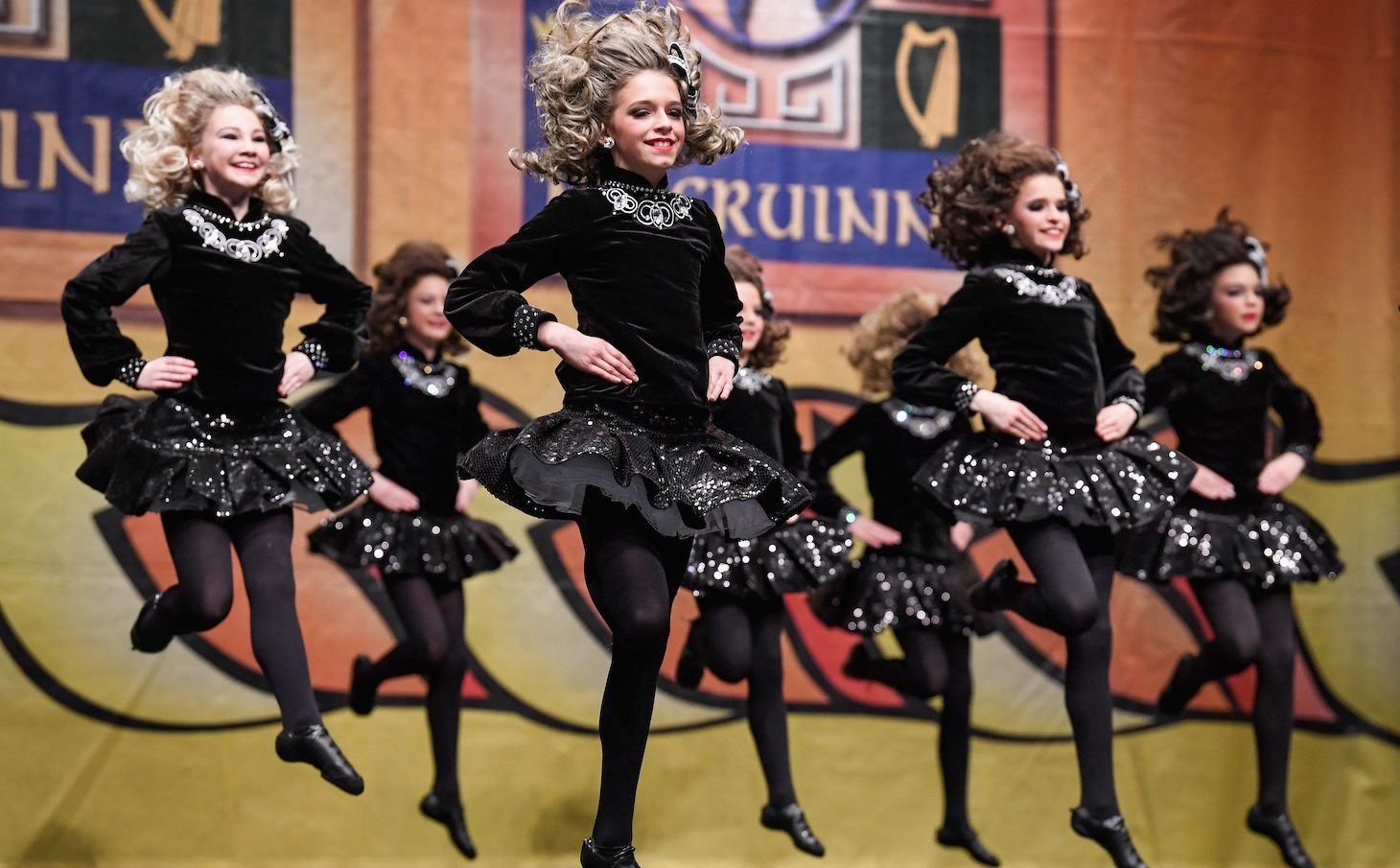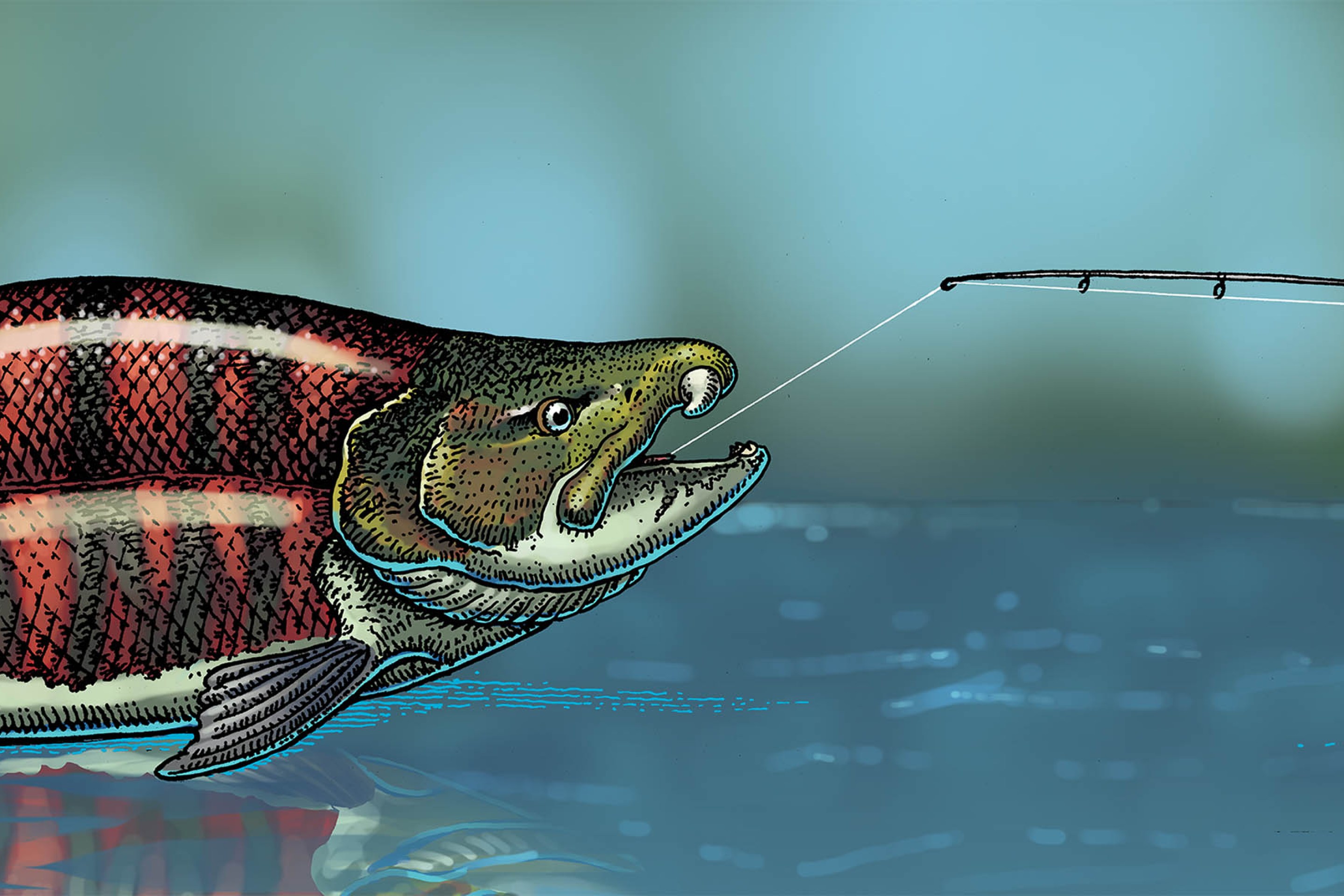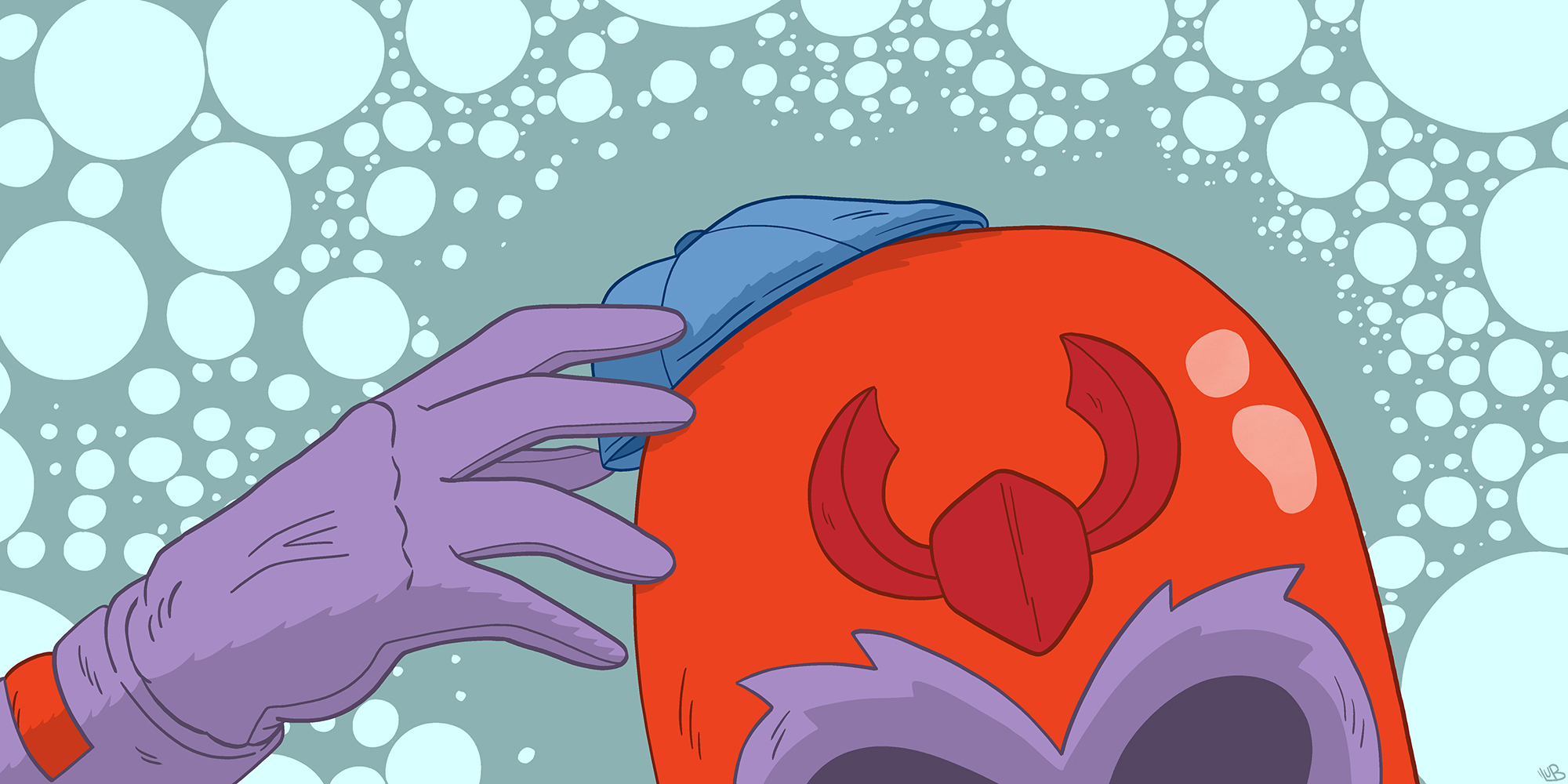Let Me Tell You About My Secret Pride, Irish Dance
11:49 AM EDT on May 27, 2021

I saw this tweet yesterday, of Vlad Guerrero Jr. demonstrating some pretty good Irish dance form, and it reminded me that I need to tell you all something: I am an Irish dancer. I grew up Irish dancing, competed at the World Championships, toured professionally in Japan, and I now teach Irish dance once a week to the youth as my hobby and side hustle. Last time I checked, Defector is a website that covers sports, culture, and “weird shit,” and Irish dance, I would argue, is all three.
I honestly couldn't tell you why I did it. But I did. pic.twitter.com/mzRXifBTev
— Andy (@_rallycap) May 26, 2021
The first thing you need to know is that I am not really Irish. This is not a requirement for the sport. I’m more Swedish and Sicilian than I am Irish, but neither of those cultures have a highly competitive and addicting dance universe, so who needs ‘em? I am also not Catholic, but I have danced and taught lessons in many a parish hall and on a Friday night during Lent you can find me at St. Alphonsus’s Fish Fry. A common misconception about Irish dance is that our Irish families force us to dance. This is not always wrong, but I joined willingly.
I started Irish dancing after I saw a performance at the high school in my town. Their feet moved so fast and their dresses were so colorful and sparkly and they all looked like they were having so much fun cheering and clapping for each other on stage. At 9 years old, I was at the age where all of my friends were joining soccer teams or swim teams or softball teams. Everyone had their team and their thing and they all had the damn jacket to wear around school and look special: the Adidas zip-up track jacket with your last name on the back and a logo on the front that said Madison 56ers or Wisconsin Select. Every sport I tried I ended up quitting before they gave out the jackets. I quit soccer when I found out it involved a lot of running. I quit tee ball after I hid behind a car when I ran the wrong way around the bases. I quit gymnastics. I quit ballet. I finished swim lessons but the pool water was too cold so swimming was out.
Two years later, I got my first jacket, black and white, with KAHLER on the back and Trinity Irish Dancers on the front. I wish I could say that jacket status led to instant popularity—it didn’t—but by that point I didn’t care. I had found my thing. Twenty years later, I have some more things, but Irish dance is still one of my things.
What you need to know about Irish dance
Let’s go through some of the basics of the sport. And to keep you entertained, I’ll sprinkle in some old videos of me performing (as opposed to competing, videos of which aren't technically allowed).
Let’s start with the shoes. We wear two different types of shoes for two different styles of dancing: Softshoes, also called ghillies, which are similar to a ballet shoe, and hard shoes, also called heavy shoes. The hard shoes make the beats and rhythm. It’s similar to tap dancing but features more dynamic movements, like leg swings and kicks and leaps about the floor. The hardshoe dances are the hornpipe and the treble jig and another series of dances called set dances (more on that later) and the softshoe dances are the jig, reel, and slip jig. In softshoe, the story goes that the dancing masters who spread the artform around Ireland back in the day would have their dancers dance with a cup of water on their head and they couldn’t spill a drop.
There are some dances that are classified as traditional and the same steps have been passed down for years and years and years, but in modern competitive Irish dance, every school choreographs their own steps and the style is constantly evolving. Every year teachers and dancers concoct more difficult leaps and spins and rhythm sequences. I retired from competition in the summer of 2011 and now I teach dancers who are at the four most basic levels of competition, yet some of their steps are just as hard as the ones I used to do.
Yes, we wear curly wigs. And I’m not really sure why. I think it has something to do with the fact that when Irish dancing was still a cute little cultural thing, it was done at gatherings on Sundays after church and girls would curl their hair to look nice for Mass. Thankfully, natural hair is making a comeback and the dancers I teach now only wear wigs for competition, and even then it’s optional.
We don’t move our arms when we dance (except for team dancing, and sometimes during show pieces). The legend goes that when the British occupied Ireland they tried to stamp out symbols of Irish identity, so the Irish started dancing with their arms down so that when British soldiers passed by their window, or fence, or bar, or hedge, they wouldn’t be able to tell that they were dancing. This seems way too cute to be historical, but the Irish say not to let the truth get in the way of a good story. I also am not confident that is actually an Irish saying, but that’s the spirit of it!
Because everything in Irish dance is taken to the extreme, this somehow got out of hand in solo competitions. A few years ago, rumors spread that some dancers at the North American Nationals (a misnomer because it’s an international competition, held in North America) were hooking their sleeves to the sides of their dresses, which I consider to be Astros-level cheating. One dancer fueled more of those rumors when she fell on stage, had a hard time getting up, and someone who was there told me it sure looked like her arm was hooked to her skirt. She later put out a statement denying cheating, but for the rest of that Nationals, dancers had to bring their arms up to shoulder height to prove they were not using any carriage assistance.
The competitions can be a little crazy. Whenever there’s a major Irish dance competition in a big city, the local paper will do a fun little story about it with several factual errors and usually a Riverdance mention (do not call us riverdancers unless you want to get stomped on), and the headline is always some version of, “Irish Dancers from Around the Globe Descend Upon [CITY NAME HERE].” It’s like we’re a giant brood of cicadas crawling out of the earth. I’m not even mad about it though, because it’s a pretty accurate description. If you hear enough accordion music in one day, you will hear phantom accordion music for several hours afterward, like a symphony of cicadas buzzing. If you happened across a feis (pronounced fesh, the gaelic word for Irish festival, which we now use to mean smaller competitions that are not qualifiers and are open to all levels) at some random convention center or hotel, you’d barely be able to walk through the hallway without getting trampled by a group of dancers practicing their floor patterns. And absolutely none of them would get out of your way.
It’s a contact sport. We’re trained to dance in a path that will command the judge’s attention and because we dance two at a time, sometimes three at a time, there’s always a good bit of drama revolving around bumps and crashes on stage. Dancers usually talk through their floor pattern before taking the stage to try to avoid this, but some collisions are inevitable, or at least you can never prove otherwise...
Like all competitive sports, Irish dance has its own ecosystem. There’s an Irish dance magazine, multiple Irish dance fitness companies, tanning companies, wigmakers, shoemakers, dressmakers, sockmakers (there’s a new practice-sock company that sells socks with emoji on the inside of the ankles. To help you turn out your feet, look for the emoji in the mirror!), and there’s even a subscription app named Feis (of course) that has succeeded in taking all the good Irish music off of any other streaming platform.
There’s a splash zone. At my first regionals (which are called Oireachtas, pronounced a-rock-tiss; please don’t ask me to explain Gaelic pronunciation) competing in solos, I was 13 years old and while I was waiting sidestage for my turn, a girl in line ahead of me puked all over the floor. I wiped some splatter off my shoe before I went up to dance.
Picking the right song is important. The first set dance that I competed at that Oireachtas was called “The Storyteller.” Set dances are named for the set tune they are danced to, and they are varying lengths and speeds. Some sets are notoriously long and therefore extremely difficult (“Planxty Davis,” I hate you) and some are nice and short and easy-breezy.
In my day, when you competed your set at a feis, you had to walk over and tell the musician the name of the song and the speed. Most dancers change set dances every year, but for some reason I could never get "The Storyteller" out of my head even though I only danced it for a few months. There were at least three times that I told the musician to play "The Storyteller" even though that was no longer my dance. Each time, the accordion or the fiddle would start the first few notes, and then I would panic and run over to the musician, suddenly remembering that I now dance “King of the Fairies” or The Downfall of Paris” or “The Lodge Road.”
Yes, many set dances have whimsically Irish names. Among my favorites: “Drunken Gauger,” “Rub the Bag,” “Hurry the Jug,” “The Rambling Rake,” and “Three Sea Captains.”
Your look is a big deal. Dancers earn their solo dress, the sparkly dresses that I loved at the first performance I saw, by reaching a certain level in competition; think of it like a belt in martial arts. Every solo dress is unique, and there’s a great resell market for used dresses, but a custom-made dress will cost you a small fortune—we’re talking thousands. One of the most sought-after brands is “a Gavin.” Gavin Doherty owns an Irish dance school in Belfast and a dress design business. His dresses always make a statement, and sometimes, if I’m being honest, the statement is way too loud.
Here’s another classic Gavin look from 2012.
Simone Biles now wears a leotard that has a goat encrusted in rhinestones on the back, so I feel compelled to tell you that it was Irish dancers who invented that specific type of bedazzled gloating. Starting in the mid-aughts, there was a trend for world champions to incorporate a globe into their dress design after they won worlds. That’s since been outlawed because that makes the dancer instantly recognizable to the judge as being a previous champ, but winning worlds is so, so, so hard, I say let them have it. I qualified for Worlds only once, my senior year of high school. Only the top third of the competition get a chance to place at Worlds, and I did not end up anywhere near that top third. I was just happy to be in Dublin.
Dress designs are sometimes used as code to represent a certain school. One school in my region regularly picks a theme for the dresses for its elite dancers. One year it was Catholic saints (yes, images of saints were embroidered into the skirt front panel of these dresses; it wasn’t cute), another year it was Irish landmarks, like Bunratty Castle. Dancers aren’t allowed to have their names embroidered onto their dress but many will skirt that rule by using their initials or hiding their name subtly inside a complicated design.
We get injured. It turns out that pounding your feet on the ground repeatedly for years is not good for you! Irish dancers have a ton of stress fractures, shin splints, sprained ankles, knee and hip problems. Not to mention bleeding toes and heels from the process of breaking in new hard shoes. I had one stress fracture, chronic shin splints, a chronic swollen ankle, and during a show in Tokyo, I landed a leap on stage and ruptured my plantar fascia. I hopped off the stage on my good foot (which was also my bad ankle), disappearing behind the curtains crying and hoping no one in the audience noticed my spot in our ending triangle formation was empty. All of my friends from dance still have in their closets a pair of crutches and at least one walking boot. We can’t bring ourselves to give them away because we just have a bad feeling we will need it again. I rolled my bad ankle so hard during a workout class that I suffered an avulsion fracture, meaning the ligament pulled so forcefully that it tore some bone off with it. I was glad I kept my crutches.
We have a governing body as organized and effective as any other sports governing body. Meaning, not very. But An Coimisiún Le Rincí Gaelacha (CLRG) is the oldest and largest governing body for competitive Irish dancing around the world. The U.S., Canada, Australia, New Zealand, Ireland, and the U.K. make up the majority of the Irish dance community and the dancers most represented at the major competitions, but there are also schools across Europe and in Mexico. Breaking set a path for all other dance forms to follow to become an Olympic sport, and now I can actually picture a day that Irish dance will be global enough to follow suit. CLRG recently sent a reminder out to all judges that they must be dressed appropriately for feisanna (the plural of feis), because there had been several judges wearing “jeans and sneakers or leggings” while on the job. Gasp!
I really cannot recommend being a boy Irish dancer enough. At the feis level of competition, boys and girls compete against each other, and it feels like the boys always win. Their soft shoes have heels on the bottom, so they can make more of an impression in the softshoe round with bangs and heel drags and sharp loud clicks. Regardless of talent and skill level, boys are always featured in performance numbers. They get to just run on stage to dance 16 bars (two eight-counts, so basically, like, 16 seconds) and then finish the ending step in the front while the girls who danced the entire three-minute piece are inexplicably stuck in the background.
These days, the joy I get from Irish dancing is passing on my thing to the next generation and seeing it become their thing. Three of my dancers recently made a video for their school’s virtual talent show, and they included a school friend who doesn’t even take Irish dance classes. But she was able to dance right along with them because every day at recess, they’ve been teaching her how to Irish dance. My thing is their thing which is now her thing!
During the pandemic we had to hold class on Zoom, and it was very difficult because the music was delayed and everyone was dancing off the beat or entirely off-camera and half the time I couldn’t even hear their beats anyways. The only useful aspect was that I could mute everyone so for once I would not have to shout over their hard shoe noises. I’m pretty sure I scream, “QUIET FEET!” in my sleep.
There are other entertainment benefits to Zoom class: In one, a dancer needed to tell me he was going to use the bathroom, so he wrote IN THE BATHROOM on a piece of paper and propped it up on the screen, but since his camera was reversed, it looked to me like, MOORHTAB EHT NI. I had to turn my camera off for a few seconds because I could not stop laughing.
Here's one of my classes, finally back in the studio as the pandemic winds down:
The dancing, often, isn’t even the most fun part of teaching Irish dance for me. Instead, it’s the relationships. At the end of one class, one dancer, 9 years old, brought up a boy she had a crush on at school. (After talking about Irish dancing, talking about crushes is my next favorite topic.) “I’ll tell you my crush if you tell us your crush,” she offered.
“Listen, maybe we save this for another class where we can share about our crushes, OK?” I said, noticing we had already gone over on class time.
“I don’t even have one,” another dancer, age 6, said wistfully.
“Well, I have a lot of crushes,” I told her.
“I used to have one, but then I switched to another guy,” the 9-year-old informed us.
We all squealed with laughter and several dancers put their hands up to their faces and peeked out through their fingers, embarrassed but at the same time enthralled.
“OK, on the count of three, we are all going to shout the name of our crush,” I said. “Ready? 1, 2, 3…”
I screamed, everyone screamed. It was the most fun I had all year.
If you liked this blog, please share it! Your referrals help Defector reach new readers, and those new readers always get a few free blogs before encountering our paywall.
Read More:
Stay in touch
Sign up for our free newsletter




